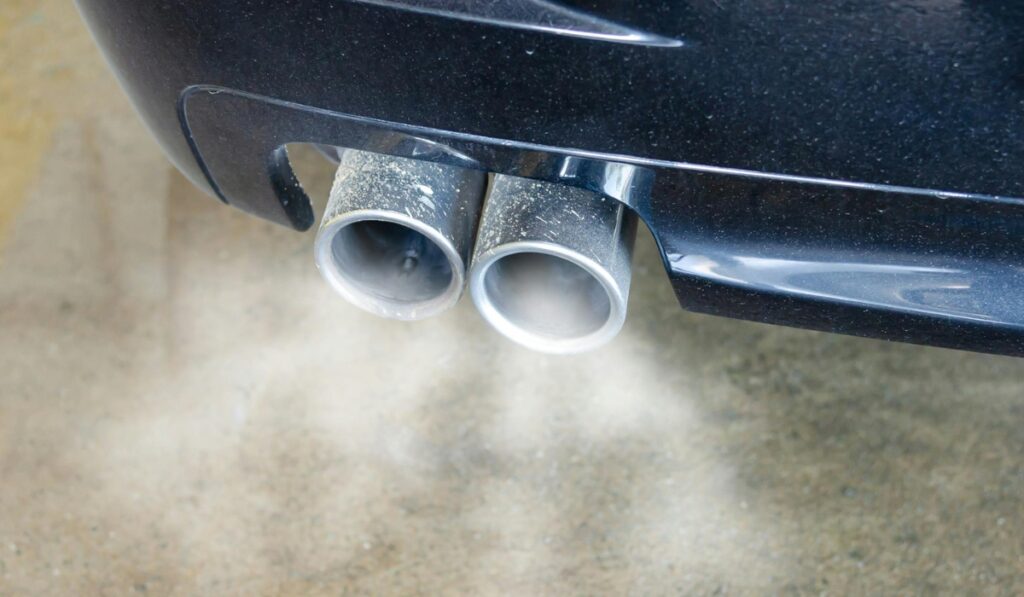Some people think Seafoam is safe for car use, but others don’t. Some say it has worked well for them, while others say it hasn’t. There have been reports of harmful effects, regardless of whether the right amount or too much was used.
Also, is it worth it to use older cars? We’ll start immediately by talking about Seafoam and the bad things it can do to your car.
Problems After Using Seafoam(Don’t Do This)
We will look at some of the bad things that Seafoam does. This can still happen even if you don’t use too much Seafoam. Based on what other users have said, here are some of the bad things that Seafoam has done:
1. It can make your oil less thick
The first bad thing is that it can make your oil less thick. The engine and all of its moving parts need oil to stay smooth. What kind of engine does your car have? The oil needs to have consistency and viscosity.
What should you do if your oil seems a little less thick than usual? Most likely, the best thing to do is to drain the rest of the oil and put in new oil.
2. It could make more sludge
As strange as it may sound, the thing that is supposed to get rid of sludge will worsen it. The answer is yes, and it can make even more sludge. For sure, this is going to hurt your engine.
More sludge means more buildup, which makes it even more likely that your engine will overheat faster than usual. The last thing you need is for your engine to get too hot and stop working. You might need to change your oil to remove the extra sludge.
3. It could kill the oxygen sensor
Let’s say your O2 sensor is about to stop working. Some people think Seafoam could speed it up. You should get the sensor itself replaced at this point.
What does it mean when an O2 sensor stops working? Your engine may be making some noise. Also, it might not tell you about problems like overheating, clogging, and so on at the best time.
That’s not all, though. A broken oxygen sensor will also cause many other problems with the car. It will get worse gas mileage, give off more pollution, and a lot more.
That ‘Check Engine’ light could come on soon, and you’ll be stuck in your driveway trying to figure out what’s wrong.
4. It could make your gas mileage worse
There’s a good chance that applying Seafoam to your gas tank will make it use more gas. Although adding a little more than the recommended amount might not make a big difference, it could cause the fuel line in your car to get clogged up even more.
5. It’s not suitable for engines with specific injector systems
If the injectors in your engine are direct, you should stay away from Seafoam. The sludge, dirt, and other stuck things will come loose. It does what it says it will do, but a new problem arises.
This will happen when all that buildup and other stuff clogs up the injectors. What do you think that will lead to? There is a chance that you will have to pay a lot of money to fix things.
You don’t want to clean the engine with Seafoam and worsen things. This is especially true if your car has a diesel-powered direct-injection engine.
6. The chance of hydro lock
The hydro lock can also happen if you use too much Seafoam. This is a terrible problem with the engine that occurs when too much liquid gets into the combustion chamber. When applied directly to the intake manifold, it also works.
This stops the piston from going all the way around, which can damage the engine. To avoid the hydro lock, be careful when applying Seafoam and never use more than what the manufacturer says is right.
7. How Seafoam Affects Power Steering
· Getting rid of rough and uneven shifting
· Gets rid of harmful moisture
· Doesn’t hurt or make seals swell
· Doesn’t change how thick the gearbox fluid is
It works with automated gearboxes, power steering, and hydraulic systems in farming or industry.
8. It can blow up the catalytic converter in your car
Seafoam can make your car run rich so that it will get too much fuel. The extra gas will burn in your catalytic converter, breaking it beyond repair.
Because it is more complicated, you can’t just clean this part with something like an oxygen sensor or gasket. Therefore, you shouldn’t use anything to clean the catalytic converter because some parts are likely made of precious metals.
9. It will make the gaskets and valves in your engine clog up
Since seafoam is a thick liquid that sticks to everything it touches, your engine will be covered in it after you pour some into the tank.
This can lead to dirt and other things getting stuck on your engine’s gaskets, valves, piston rings, and oxygen sensors. All of these things will eventually make your car run less well.
10. It could make your car use more gas
If you put Seafoam in your gas tank, your gas mileage may decrease. Even if you add more than the recommended amount, the petrol line in your car could get clogged.
For What Reasons Is Seafoam Not A Good Choice For Certain Engines?
Some people say that Seafoam shouldn’t be used on specific engines. In particular, engines are used in older cars. That’s because Seafoam might be too much for some parts of your engine, like your O2 sensor or spark plugs.
Not only that, but it won’t work with older cars that have fuel injection systems built into the engines.
Some people have also said that Seafoam might not work as it should in most engines, whether they are old or new. It might make sludges build up over time instead of getting rid of them. And that can put a lot of stress on your engine, especially if it gets too hot.
Conclusion
You might want to use Seafoam at your own risk when you use it, primarily when it is known to have some harmful effects. Even the stuff “under the hood” of your car is essential.
This will help you decide if Seafoam is suitable for your car. If you’re unsure what to do, you should look for other ways to clean your engine.
As we already said, many engine cleaners are based on nitrogen that you can use more so if your car has a 4-stroke engine cooled by water (in which case you don’t need to use Seafoam).
If you want an engine that runs better, always use the right fuel. Some fuel brands use additives and cleaners to keep your engine running smoothly for a long time.





